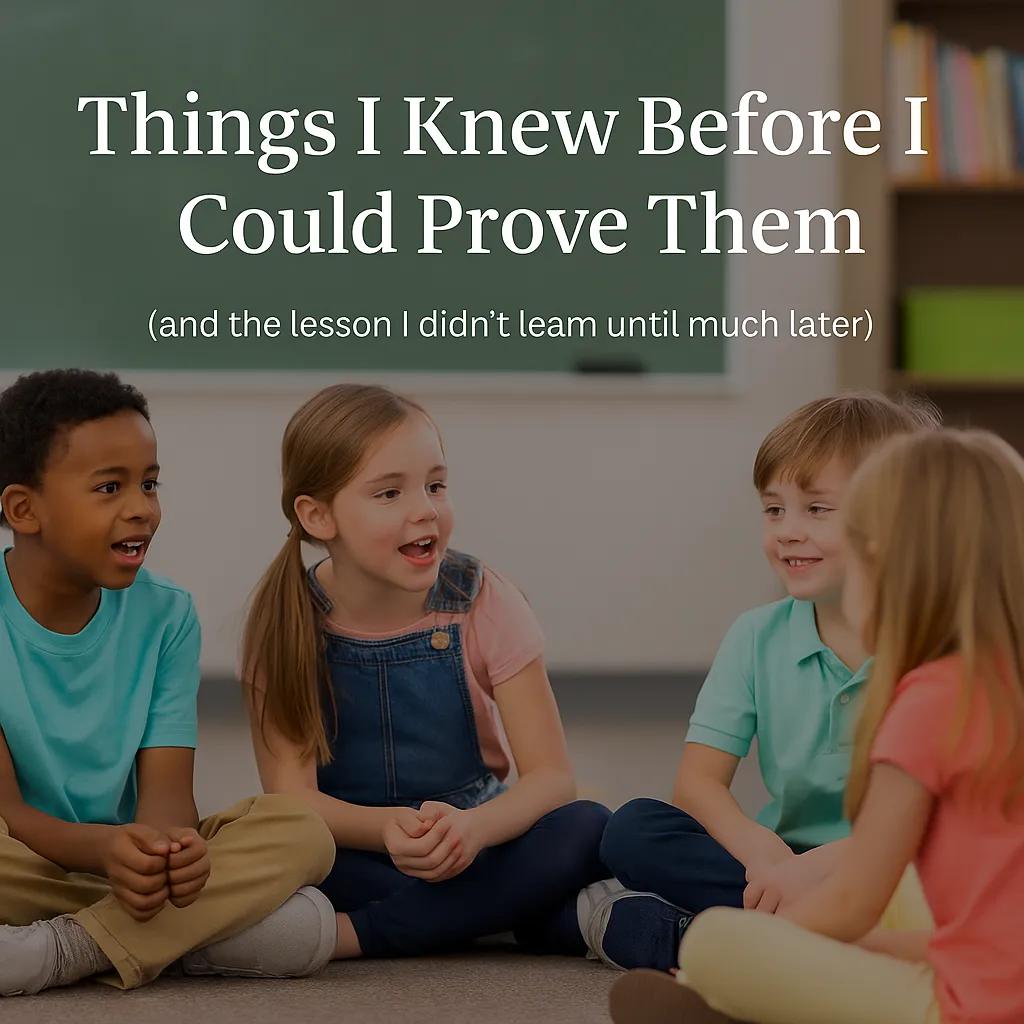
Things I Knew Before I Could Prove Them
Things I Knew Before I Could Prove Them
(and the lesson I didn't learn until much later)
When I was in second grade, I got in trouble—not for being disruptive, but for trying to explain what I understood to other students. My “punishment” was to be moved up to third grade. I kept excelling academically. But I missed something else entirely.
I missed the lesson that knowledge and kindness weren’t supposed to be at odds.
Somewhere along the way, I absorbed a different lesson:
That being helpful could be seen as showing off.
That explaining might make people uncomfortable.
That it was safer to stay in my head than risk being labeled a smart aleck.
I turned the label into a joke. I wore it like a badge with a wink.
But I never fully understood the sting underneath—until now.
Recently, I realized:
I wasn’t trying to prove I was smart.
I was trying to connect.
And the paradox was this:
I was seen as “too much” in the very moment I was trying to be generous.
When you’re young, you don’t yet know how to hold that contradiction. So you carry it. You adapt. You get sharper, quieter, funnier. You build workarounds. And eventually, you forget what you were trying to do in the first place: make meaning with someone.
Now I’m reclaiming that voice—the one that explains not to impress, but to invite others in.
Because maybe the things I knew before I could prove them…
…were never meant to be kept to myself in the first place.
Postscript: The Pattern Beneath the Stories
Lately, something unexpected has been happening. Friends, colleagues, even people in my mastermind group are sharing deeply personal insights—some rooted in past pain, others blooming out of current clarity. Some are public. Some are whispered. Some are just quietly felt.
What strikes me is not the content of what they’re saying. It’s the mechanism. The inner unfolding. The way one person’s truth ripples out and another begins to find language for something they couldn’t name before.
It’s less like a trend and more like a tuning.
Not a wave, but a weave.
We are not mirroring each other's experiences.
We are reflecting the shared motion of healing.
And healing, as it turns out, isn’t linear. It loops, it spirals, it returns. Sometimes it sings. Sometimes it hides. Sometimes it just sits quietly and waits for someone to notice.
And sometimes—as I’m just beginning to understand—it begins with a voice that says:
“Let me try to explain…”
